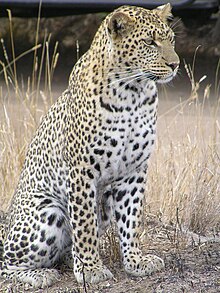Creationists are constantly harping on the difference between “micro-evolution” and “macro-evolution”. ‘Micro’ being the small changes within a population that is readily observable in nature and the lab. ‘Macro’ being the larger changes between higher taxonomic levels. Personally, I greatly dislike this artificial distinction. There is evolution.
I’ve seen this claim being made for almost two decades. I have yet to see anything that would actually, somehow, prevent changes at a higher taxonomic level. Is there some kind of ‘switch’ that only allows for micro-evolution?
Not having any kind of evidence doesn’t stop creationists from making the claim.
Small changes resulting from natural selection are observed, but are not observed to accumulate to produce structural changes.
I’ve shown previously that major structural changes can be observed. I guess to Mr. “it’s still a dog” Creationist, evidence of beneficial mutations and positive structural changes don’t matter. No, I don’t have to guess, I know that evidence doesn’t matter to them.
Review the papers I’ve linked to in previous installments. Look at the changes in whales and horses and hominids over time.
The problem is that, unlike what scientists have been looking at for the last 100 years or so, the kinds of changes that creationists expect to be fully documented are huge. Even looking at dogs, we’ve seen massive changes in the basic wolf-like form in about 10-15 thousand years and they are still dogs. Asking for (demanding) a complete step-by-step history of any organism on the planet is unreasonable. It’s certainly not the level of evidence needed in even a criminal trial. And certainly creationists can’t document that level of detail for any of their own notions.
What we can do is compare closely related species in extreme detail. We can look for unique genetic characteristics in each species and construct a method of displaying the most likely way in which the various lineages diverged. This diagram is called a cladogram. I’m going to show you a very cool one from this paper: The Late Miocene Radiation of Modern Felidae (Cats Rule!): A Genetic Assessment.

The authors took genetic samples of 37 felid species and 7 outgroup species that are feliforms. They analyzed 19 areas of the autosomal (non-sex) DNA, 5 X-linked DNA sequences, 6 Y-linked sequences (both sex chromosomes) and 9 mitochondrial DNA segments. Basically each animal had nearly 19,000 base pairs identified.
Then they compared all of that data and used a computer to determine the most likely relationships among the species. They didn’t tell the computer that lynxes and bobcats were closely related or that caracals and servals were probably closely related. These are the relationships developed purely by computer analysis.
What’s more, by comparing certain areas of the genome, an estimate of the age of the speciation could be made (those are the base of the branches and the red numbers).
The black numbers with arrows indicate a rare insertion or deletion that is shared among all future species. If you think about it, what is more likely? That the exact same mutation (insertion of a single A in a certain point) will occur in two totally unrelated species or that the two species with that exact same mutation are closely related.
Just by looking at this chart, we can actually see some of the small changes that accumulate in modern species over time. For example:
- All small cats (everything but the Bay cats and Pantheras) share an insertion at UBE1Y (no, I don’t know what gene that is)
- All small cats except the caracals and ocelots share a deletion at SRY5
- All domestic cats share several mutations (SMCY and UBE1Y and others)
- All domestic cats except for the jungle cat share another deletion in SRY5
- etc
It is obvious to even a casual student of biology that these changes are accumulating over time. All domestic cats descended from a common ancestor. All small cats (except the caracals and ocelots) shared a common ancestor. And the small cats all shared a common ancestor.
I hope that it’s obvious that this

and this

are very different animals, but they are different in minor ways compared to the traits that make them both felids. Short muzzle, carnassial teeth, upright, mobile ears, long tail, retractile claws, etc.
Yet, they are different sizes, hunt differently, even talk differently (yes, I can understand them, though I’m not as fluent in modern Panthera dialects).
Honestly, with this kind of data appearing for more and more species (see whales coming up soon), I don’t see how creationists can use this ‘weakness’ anymore.
